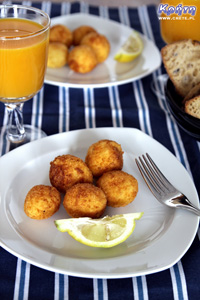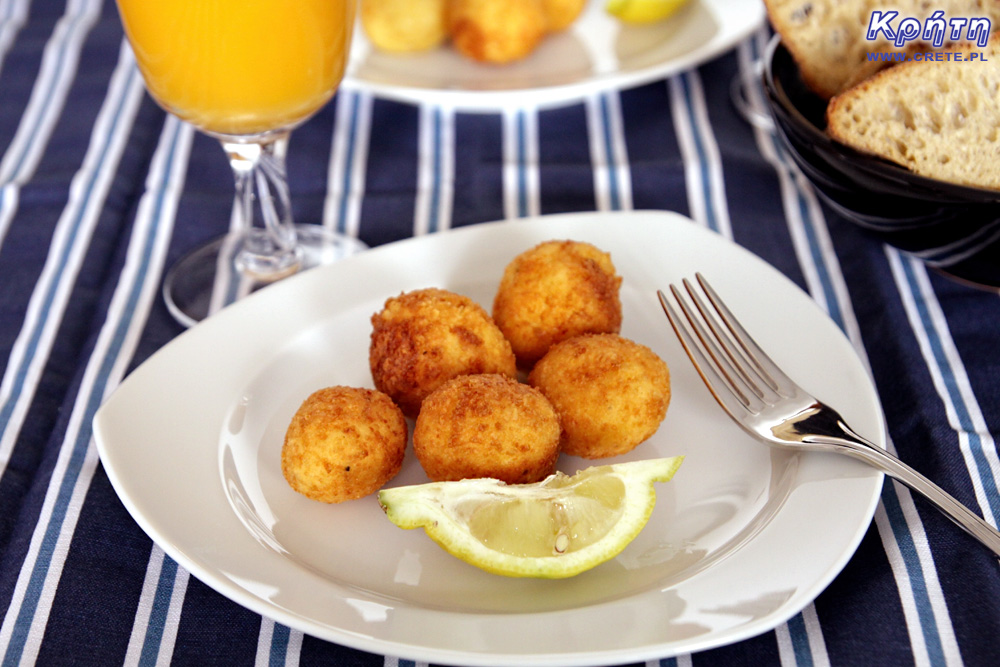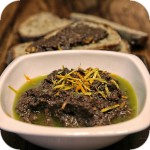

Greek cheese balls fried in deep oil, probably some of you know from vacation journeys. The Greeks serve them with lemon, which emphasizes the taste of melted cheeses. The rich composition of the taste is thanks to the three cheeses from which they are made. Slightly spicy salty feta, sweet and soft Gouda and mature cheddar complement each other, but their flavor can be enriched by adding herbs, such as mint. This tasty snack is unfortunately a good calorie bomb, so if someone counts calories, Tirokroketes will not be a good choice.
1. The preparation of cheese balls begins with grating cheese on a grater and mixing their bowl together with egg, flour, milk and pepper. If necessary, you can add a little milk more. It is important that all components are combined with each other and that a compact ball can be formed from them. From the above amount should come out about 16-18 balls.
2. Put the prepared mass into the fridge for about 45-60 minutes.
3. From the pre-prepared mass, form balls with a diameter of approximately 3-4 cm.
4. Each of them we roll in flour and shake off its excess.
5. Fry them in deep oil preferably in a saucepan. The oil must be very hot. Frying takes very long, just enough to make the cheese balls take on a golden color.
6. Put fried truffles on paper towels to drain them from excess oil.
Serve warm together with a quarter of lemon.


Kalitsounia is a quite labor-intensive dish similar to the dumplings. Like them, they can contain various types of filling, both in the salty and sweet versions. However, in contrast to the calitsounia dumplings, they are deeply fried in deep oil or baked in the oven.
Although many people avoid street food, we, for our part, encourage you to use such places in Greece. Your particular interest should be aroused by places where there are swarms of local Greeks. And do not worry about how this place looks like, the oilcloth on the tables and a collection of not-perfect-looking chairs can be a harbinger of tasty (albeit not always cheap) food. Of course, choose with your head and wisely, rather we advise against all kinds of hamburgers, ice cream shops and small gastronomy based on continental quick delicacies. However, places offering products based on fragments of local cuisine can turn out to be really interesting discoveries. This is how we discovered pancakes stuffed with spinach and feta cheese.

The best to prepare will be big meaty black Greek olives called throubes. Alternatively, you can use the more popular kalamata variety. However, if you can not use whole olives, you can use the finished paste as we wrote above. However, it should be noted that the list of ingredients is as short as possible and devoid of E-chemistry.
Komentarze
komentarz z
Uwielbiam, tak jak saganaki pabierowane !!
komentarz z
Ser saganaki też bardzo dobry :)
komentarz z
Przesmaczne!!!
komentarz z
Smakotki byłam w Grecji i jadlam
komentarz z
Pychota
Wypełnij poniższy formularz aby dodać komentarz
lub kliknij w poniższy link aby skorzystać z możliwosci komentowania przez facebooka:
https://www.facebook.com/crete.poland/posts/10152967595707551,10153414446307551